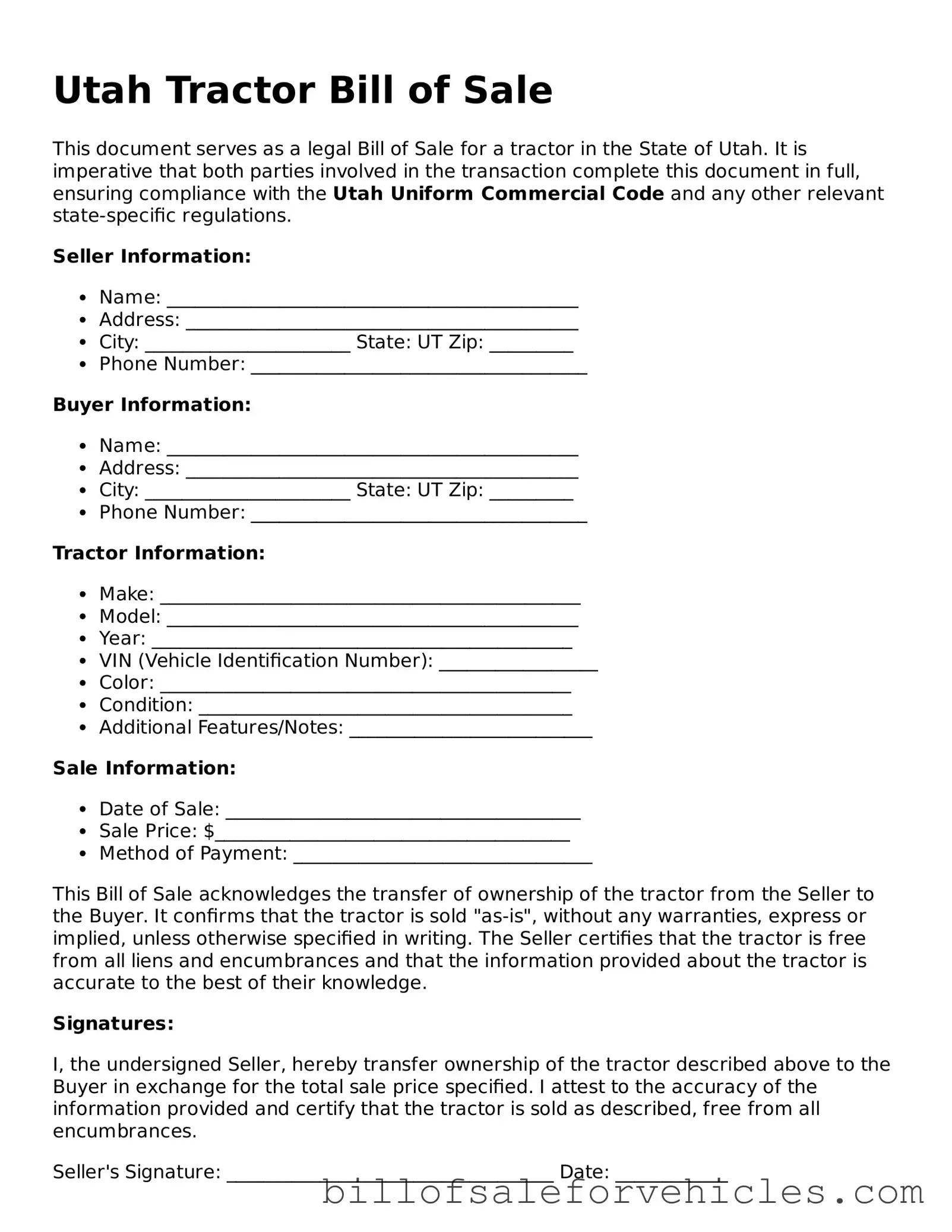What is a Utah Tractor Bill of Sale form?
A Utah Tractor Bill of Sale form is a legal document that proves a tractor was sold and bought between two parties within the state of Utah. It serves as a receipt for the transaction and includes important details such as the seller's and buyer's information, the tractor's description, and the sale price.
Why do I need a Tractor Bill of Sale in Utah?
In Utah, a Tractor Bill of Sale is often required for several reasons. It can be necessary for the registration of the tractor, tax purposes, and to protect both the buyer and seller in case of future disputes about the transaction.
What details should be included in the form?
The form should include the names and addresses of both the buyer and the seller, a detailed description of the tractor (including make, model, year, and VIN), the sale date, and the purchase price. Signatures of both parties are also essential.
Do both parties need to sign the Utah Tractor Bill of Sale?
Yes, for the document to be considered valid, both the seller and the buyer must sign the bill of sale. This confirms that both parties agree to the terms and conditions of the sale as outlined in the document.
Does the Bill of Sale need to be notarized in Utah?
Though not always required, getting the bill of sale notarized is highly recommended. Notarization can add an extra layer of legal protection and authenticity to the document, making it more difficult to contest.
How do I register a tractor with a Bill of Sale in Utah?
To register a tractor in Utah, take the completed Bill of Sale to your local Division of Motor Vehicles (DMH) office, along with any other required documents. These may include proof of insurance, an application for registration, and payment for any applicable registration fees.
Can I use a Tractor Bill of Sale for other types of machinery?
While a Tractor Bill of Sale is specifically designed for the sale of tractors, it can often be used as a template for other types of heavy machinery with some modifications. However, it's important to check any specific requirements for other types of machinery in Utah.
